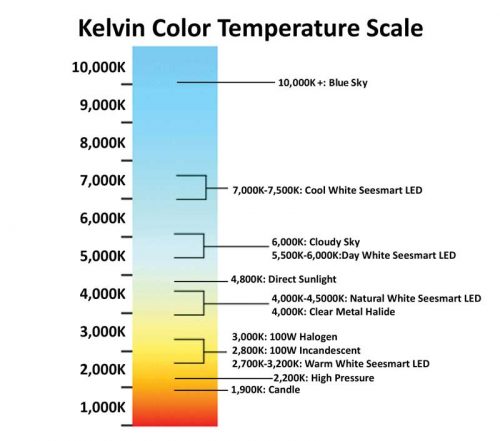
Since the exact colour of any given white point is hard to standardize or measure with words, it is done using the Kelvin colour temperature.
What is the temperature scale?
In the late 19th and early 20th centuries, the German physicist Max Planck studied the way hypothetical black bodies would emit different wavelengths of light if heated to varying temperatures. Through his observations, Planck was able to determine the wavelengths associated with different temperatures. At the highest temperature, a black body would emit a blueish tint. As temperatures decreased (while still remaining very hot), yellow, orange, and red hues would occur. Planck used the temperature reading on the Kelvin scale to refer to the colours the hypothetical object would emit—at 6500 K, a distinct blueish-white light, and at 5000 K, a softer reddish-white hue. These temperatures became the de facto names for these colours, hence the term ‘colour temperature.’
For many, that the higher temperature matches with the more blueish-white, and the lower matches with the reddish-white may clash with preconceived notions about the temperature of colours. In reality, however, the traditional perception of red and yellow as warm colours and blues as cool hues is more of a human association than a scientific correlation. Think of a lit match: the hottest part of the flame is the blue portion in the centre, while the red and yellow flecks are slightly cooler (again, while remaining very hot).
How does white point impact digital displays?
As established, LED displays are set to a specific white point that informs how all its colours will be portrayed. For instance, when the screen is told to show white, the white point is the colour it displays. Since the exact colour of any given white point is hard to standardize or measure with words, it is done using the Kelvin colour temperature.
The most common colour temperature setting for digital displays is 6500 K, also known as D65. This does not mean the
display itself rises to 6500 K, it simply means the colour it has as its white level matches the colour from Planck’s hypothetical black body at that temperature. This is almost certainly the white point setting for one’s mobile phone and television.





